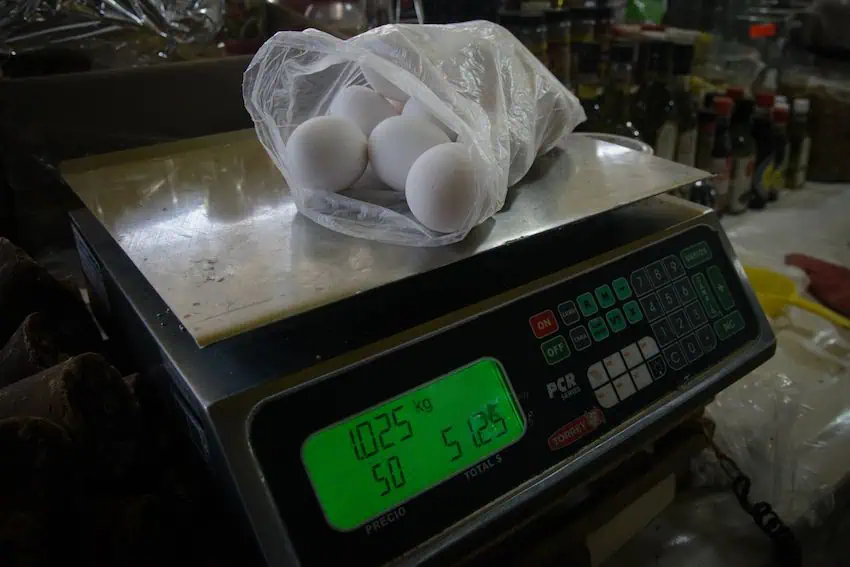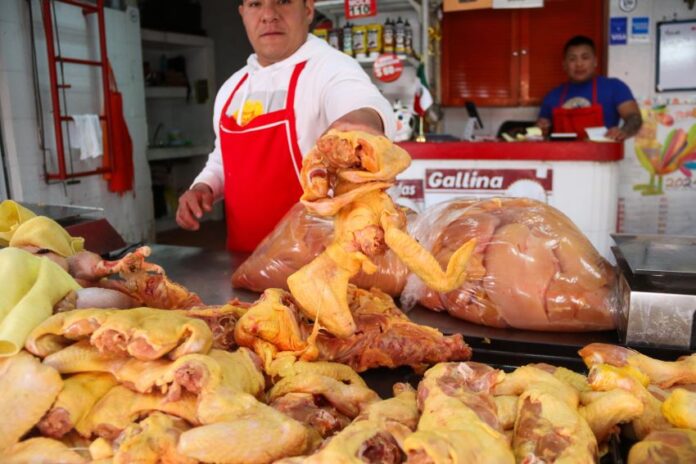Poultry prices are on the rise in Mexico as a pathogenic avian influenza outbreak continues in the United States.
Commonly dubbed bird flu, the virus has forced poultry producers to euthanize some 160 million chickens in the U.S. since the outbreak began in 2022, creating stress on supply and increasing prices for consumers both at home and abroad.
#Inflación 🚨Diversos alimentos centrales en la dieta de los mexicanos se muestran al alza.
🟣El precio del pollo registra un incremento anual de 10.76%.
🟣El precio de la carne de res registra un incremento anual de 6.72%.
https://t.co/x5o4uLX2WA pic.twitter.com/KeGxzkImwJ— México, ¿cómo vamos? (@MexicoComoVamos) February 8, 2025
Approximately one-fifth (21-22%) of Mexico’s chicken supply is imported from the U.S. and Brazil (with Brazil accounting for only 16% of annual chicken imports). In the past year, chicken prices have risen as much as 43% in some areas while egg prices have increased up to 27%, according to data from the National Union of Poultry Farmers.
For Mexican households, this means that the average price per kilo of a whole chicken in a public market rose from 52.60 pesos (US $2.57) in February 2024, to 75.20 (US $3.57) in February 2025.
Meanwhile, white eggs — the most popular variety of eggs in Mexico — went from 51.20 pesos per kilo (US $2.50) in supermarkets in February 2024, to 59.50 (US $2.90) in February 2025.
In the northern city of Monterrey, Nuevo León, the price of poultry increased by an average of 18.84% in the first half of February. Data from the National Institute of Geography and Statistics (INEGI), published by the newspaper Reforma, revealed that this rise follows five consecutive months of rising poultry prices.

Reforma also said this is the highest price rise recorded by INEGI for any two-week period since June 2021.
“It’s a luxury to eat chicken,” Doña Micaela, a housewife in Mexico City who has also reduced her intake of eggs, told the news outlet Crónica, “I’m now cooking one egg on two tortillas, and sometimes even three [tortillas] so that they are filling.”
The rise in prices is hitting Mexican families hard, as Mexico is the largest consumer of eggs in the world. According to the Agricultural Markets Consulting Group (GCMA), Mexicans eat an average of 23 kilos of eggs per capita each year. That means that overall, more than 130 million eggs are eaten per day in Mexico.
As for chicken, Mexico is the fifth largest consumer of pollo in the world, averaging 33.5 kilos per person per year. That means Mexicans eat 5 million tonnes of chicken every year.
Poultry prices have also weighed on the inflation rate in Mexico.
Analysts consulted by Citi Mexico expect inflation to close February at 3.81%, and to reach 3.83% by the end of the year. So far, analysts blame higher inflation levels on the rise in prices of livestock products, including egg (15.17%), poultry (13.03%) and pork (12.42%).
Chicken and eggs are part of Mexico’s so-called Package Against Inflation and Expenditure (PACIC), an initiative established in 2022 between the federal government, producers, distributors and marketers to reduce costs and control prices of 24 essential commodities.
With reports from Reforma and El Imparcial
